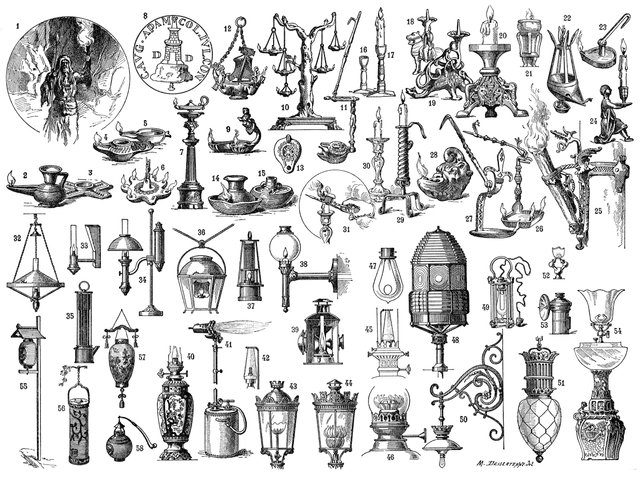History of technology

The history of technology is the history of the invention of tools and techniques and is similar to other sides of the history of humanity. Technology can refer to methods ranging from as simple as language and stone tools to the complex genetic engineering and information technology that has emerged since the 1980s. The term technology comes from the Greek word techne, meaning art and craft, and the word logos, meaning word and speech. It was first used to describe applied arts, but it is now used to described advancements and changes that affects the environment around us.New knowledge has enabled people to create new things, and conversely, many scientific endeavors are made possible by technologies which assist humans in traveling to places they could not previously reach, and by scientific instruments by which we study nature in more detail than our natural senses allow.Since much of technology is applied science, technical history is connected to the history of science. Since technology uses resources, technical history is tightly connected to economic history. From those resources, technology produces other resources, including technological artifacts used in everyday life.Technological change affects and is affected by, a society's cultural traditions. It is a force for economic growth and a means to develop and project economic, political and military power.
Measuring technological progress
Many sociologists and anthropologists have created social theories dealing with social and cultural evolution. Some, like Lewis H. Morgan, Leslie White, and Gerhard Lenski have declared technological progress to be the primary factor driving the development of human civilization. Morgan's concept of three major stages of social evolution (savagery, barbarism, and civilization) can be divided by technological milestones, such as fire. White argued the measure by which to judge the evolution of culture was energy.For White, "the primary function of culture" is to "harness and control energy." White differentiates between five stages of human development: In the first, people use the energy of their own muscles. In the second, they use the energy of domesticated animals. In the third, they use the energy of plants (agricultural revolution). In the fourth, they learn to use the energy of natural resources: coal, oil, gas. In the fifth, they harness nuclear energy. White introduced a formula P=E*T, where E is a measure of energy consumed, and T is the measure of the efficiency of technical factors utilizing the energy. In his own words, "culture evolves as the amount of energy harnessed per capita per year is increased, or as the efficiency of the instrumental means of putting the energy to work is increased". Nikolai Kardashev extrapolated his theory, creating the Kardashev scale, which categorizes the energy use of advanced civilizations.Lenski's approach focuses on information. The more information and knowledge (especially allowing the shaping of natural environment) a given society has, the more advanced it is. He identifies four stages of human development, based on advances in the history of communication. In the first stage, information is passed by genes. In the second, when humans gain sentience, they can learn and pass information through experience. In the third, the humans start using signs and develop logic. In the fourth, they can create symbols, develop language and writing. Advancements in communications technology translate into advancements in the economic system and political system, distribution of wealth, social inequality and other spheres of social life. He also differentiates societies based on their level of technology, communication, and economy:
- hunter-gatherer,
- simple agricultural,
- advanced agricultural,
- industrial,
- special (such as fishing societies).
In economics, productivity is a measure of technological progress. Productivity increases when fewer inputs (labor, energy, materials or land) are used in the production of a unit of output. Another indicator of technological progress is the development of new products and services, which is necessary to offset unemployment that would otherwise result as labor inputs are reduced. In developed countries productivity growth has been slowing since the late 1970s; however, productivity growth was higher in some economic sectors, such as manufacturing. For example, in employment in manufacturing in the United States declined from over 30% in the 1940s to just over 10% 70 years later. Similar changes occurred in other developed countries. This stage is referred to as post-industrial.In the late 1970s sociologists and anthropologists like Alvin Toffler (author of Future Shock), Daniel Bell and John Naisbitt have approached the theories of post-industrial societies, arguing that the current era of industrial society is coming to an end, and services and information are becoming more important than industry and goods. Some extreme visions of the post-industrial society, especially in fiction, are strikingly similar to the visions of near and post-Singularity societies.

The use of tools
It is a commonplace that humans are distinguished from other creatures by a technological ability, and man has often been described as a tool-using animal. The distinction is not entirely valid. Some animals do use tools. Chimpanzees are the most often quoted example, stripping a twig to plunge it into an anthill and then eating the tasty termites which cling to the end of it.
A more modern example of tool-using is that of crows living in a walnut avenue in the Japanese town of Sendai. The walnuts are too hard to crack. So the crows have taken to dropping them on a pedestrian crossing where they are crushed by the passing traffic. When it is the pedestrians' turn, the crows fly in to bear off the fragments.
But there is a difference between using a tool which comes to hand, however improbably, and fashioning one for a purpose. Shaping a tool for cutting or scraping (two basic and useful functions) is a difficult task. Such a tool must be made of a hard material, and the hardest material easily available on the surface of the earth is stone. But how does one shape a stone without tools?
The history of human technology begins with the discovery of how to give stone a cutting edge. The type of stone found most suitable for the purpose is flint.
Stone tools: from 2.5 million years ago
The human discovery that round nodules of flint can be split and chipped to form a sharp edge is extremely ancient. Tools made in this way have been found in Africa from about 2.5 million years ago (the earliest known examples have been discovered at Gona, in the Awash Valley in Ethiopia). Gradually, over the millennia, in an extremely slow version of an industrial revolution, new and improved techniques are developed for striking off slivers of stone.
Variations in the flints found with fossil remains (differing both in the method by which flakes are chipped from the core, and in the range of shapes created) are used by anthropologists as one way of assigning human skeletal remains to specific groups or Divisions of the Stone Age.
In the earliest periods a sgle tool is usually made from the core of the flint, resulting in an instrument that can be used in a fairly rough manner for either cutting or scraping. Hundreds of thousands of years later, craftsmen have become skilled at forming the flakes themselves into implements of various kinds, producing specialist tools for cutting, scraping, gouging or boring, as well as sharp points for arrow and spear heads.
These sophisticated stone tools, in their turn, make it possible to carve materials such as antler or bone to create even sharper points, or more complex shapes (such as hooks or needles).
Fire: from 500,000 years ago
An event of crucial importance in the development of technology is man's taming of fire. This probably happens some 500,000 years ago in China, where the caves occupied by Peking man contain what appear to be hearths. Some experts believe there is evidence of the use of fire much earlier in south Africa.
It will be many millennia before fire is adapted to any purpose other than for warmth and for roasting meat and root vegetables. But more than 250,000 years ago hunters realize that the sharpened point of a wooden spear can be hardened by charring it in embers.


img credz: pixabay.com
Nice, you got a 89.0% @abulabubu upgoat, thanks to @atikulislam
Want a boost? Minnowbooster's got your back!
The @OriginalWorks BETA V2 bot has upvoted(1%) and checked this post!
Some similarity seems to be present here:
http://www.historyworld.net/wrldhis/PlainTextHistories.asp?historyid=ab11
This is an early BETA version. If you cited this source, then ignore this message! Reply if you feel this is an error.
Thanks
nice post
thanks mita
You did an amazing job Emmanuel
Thank you
New knowledge enable people to create new things
just wow vai great informative post
nice post